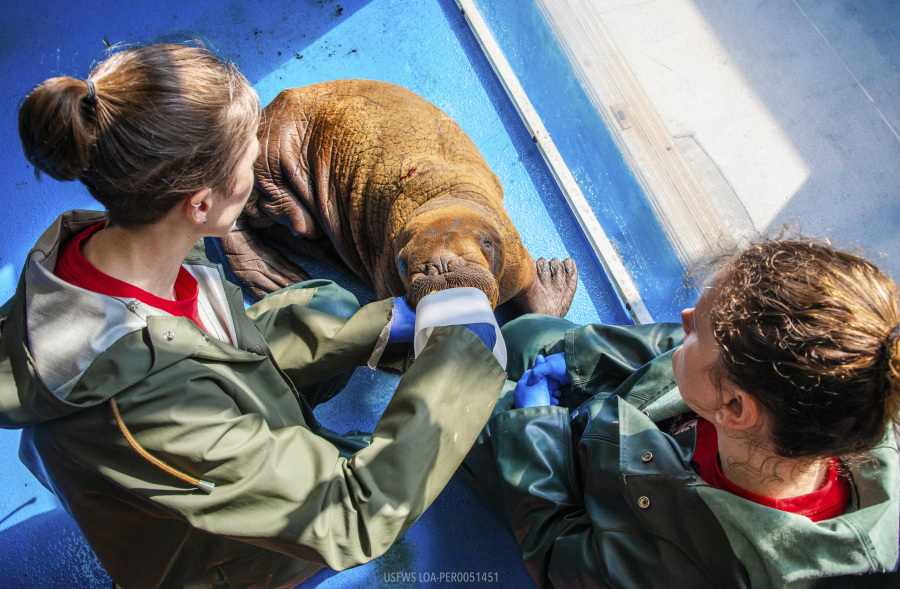JUNEAU, Alaska — A walrus calf is being nursed back to health after being found on its own miles inland by oil field workers in Alaska.
The male Pacific walrus was found Monday and flown a day later from the North Slope to Seward, where the Alaska SeaLife Center is based — a journey of at least 700 miles (1,126 kilometers). Staff with the nonprofit research facility and public aquarium are caring for the roughly 200-pound (90 kilogram) animal, which was found to be dehydrated and possibly fighting an infection. ConocoPhillips Alaska, a major oil producer in the state operating on the North Slope, offered the use of a company plane to fly the calf to Seward.
The calf, estimated to be about one month old, was found about 4 miles (6.4 kilometers) inland from the Beaufort Sea, the center said. A “walrus trail,” or tracks, was seen on the tundra near a road where the walrus was found. But it’s unclear how, exactly, the calf got there, the center said.
The range of the Pacific walrus includes the northern Bering and Chukchi seas but the walruses are occasionally observed in areas like the Beaufort Sea, according to the Alaska Department of Fish and Game.




